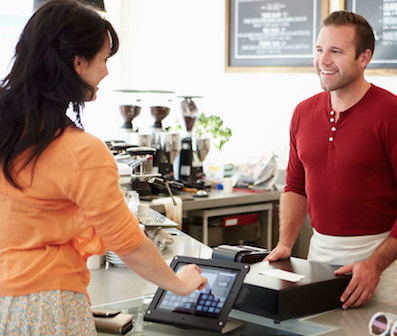 Cleanzine: your weekly cleaning and hygiene industry newsletter 18th April 2024 Issue no. 1110
Cleanzine: your weekly cleaning and hygiene industry newsletter 18th April 2024 Issue no. 1110
Your industry news - first
The original and best - for over 20 years!
We strongly recommend viewing Cleanzine full size in your web browser. Click our masthead above to visit our website version.
New self-cleaning film for touchscreens enhances cleanliness at airports, doctor's offices, restaurants and schools
 In a recent study of germs in airplanes and airports, the dirtiest places to touch weren't what travellers expected.
In a recent study of germs in airplanes and airports, the dirtiest places to touch weren't what travellers expected.
The dirtiest touch point was the touchscreen on the check-in kiosk, which had 10 times as many contaminants as the toilet seat.
The combination of this study and comments from customers led self-cleaning surface products expert NanoTouch Materials, to develop a clear, self-cleaning adhesive film that can be easily applied to all forms of touch screens. This film includes mineral nanocrystals, which are powered by light and generate an oxidation reaction stronger than bleach.
"The more our product development team thought about it, the more applications became obvious," says Mark Sisson, co-founder of NanoTouch Materials. "We'd be in a restaurant eating lunch and see multiple servers touching the same checkout screen after handling people's dirty dishes and money. We'd see doctors carrying an iPad, entering information during multiple patient visits. So it became much bigger than just an airport kiosk."
NanoTouch Materials says it was the first to develop NanoSeptic self-cleaning surfaces, but this is the first clear material in its lineup. A wide variety of industries is already using the company's self-cleaning skins for high traffic touchpoints such as door handles, and its mats for reception counters as well as portable applications for travel and food service.
NanoTouch recently launched a self-cleaning liner for TSA security bins in airports and other high security facilities like nuclear power plants.
This new clear self-cleaning film uses a residue-free adhesive so it holds up to use in public spaces better than traditional static cling films - and the self-cleaning action works continuously to completely break down any organic contaminants deposited on the screen. NanoTouch has announced that the film will be sold in 12in x 18in sheets that can be cut to whatever size the customer needs. For applications like an airline check-in kiosk where there may be thousands of touchscreens around the world that are all the same size, NanoTouch can manufacture film sheets sized specifically for that device to elimate the need for cutting the film.
Discussing customer feedback, Dennis Hackemeyer, co-founder, says: "We've already had customers in travel, healthcare and education reach out to us about being early adopters before we've even launched the product. And we're talking to the research team at a major school of nursing that is interested in conducting a clinical trial to assess real world outcomes from using multiple self-cleaning surfaces in a healthcare environment. These surfaces would include door handle skins, reception counter mats and tissue box covers.
"With many facilities, the janitorial staff focus on traditional cleaning tasks such as emptying bins, and cleaning windows, floors and toilets. These efforts typically result in the only visual benefit since the facility looks clean. High traffic touchpoints, like door handles, are generally not a priority even though those surfaces are highly contaminated and touched most often. Touchscreens, by contrast, are almost never cleaned unless they are visibly dirty enough to interfere with use."
The cleaning processes and procedures have not adapted to the heavy use these touchscreens get. At airports today, airlines are directing every passenger to check in using the kiosks. This is a major change from just a few years ago when the touchscreens were only used by a few people looking to avoid long check-in lines. And while almost all passengers are now using these kiosks, little regular cleaning seems to be being conducted, so a self-cleaning surface can help offset this lack of regular cleaning.
Similar situations exist in food service and healthcare environments. These screens are rarely, if ever, cleaned. Self-cleaning surfaces can help offset the use of additional manpower and cleaning chemicals - and with manpower being replaced by self-service kiosks in fast food restaurants and convenience stores, a self-cleaning touchscreen plays an even more important role in maintaining a clean environment.
The sheets will be available through distributors or online starting 1st June at:
31st May 2018







